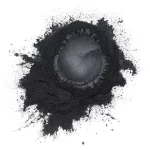Title: A Comprehensive Overview of Electroplated Cubic Boron Nitride Grinding Wheels and Abrasive Grain Leaf Arrangement
Introduction:
In the world of manufacturing and precision machining, abrasives play a crucial role in achieving high-quality results. One such abrasive material is cubic boron nitride (CBN), renowned for its exceptional hardness and thermal stability. Electroplated CBN grinding wheels have gained significant popularity due to their versatility and efficiency in various grinding applications. In this article, we will explore the intricate details of electroplated CBN grinding wheels, with a special focus on the abrasive grain leaf arrangement.
1. Understanding Electroplated CBN Grinding Wheels:
Electroplated CBN grinding wheels are made by depositing a layer of CBN abrasive grains onto a metal substrate using an electrolytic process. This method ensures excellent adhesion between the abrasive grains and the matrix, resulting in a durable and high-performing grinding tool. Electroplated CBN wheels are widely used in industries such as automotive, aerospace, and medical, where precision machining is of utmost importance.
2. The Advantages of Electroplated CBN Grinding Wheels:
a. High Hardness: Cubic boron nitride is one of the hardest materials known, second only to diamond. This exceptional hardness allows electroplated CBN grinding wheels to withstand high forces and provide superior cutting performance.
b. Thermal Stability: CBN has excellent thermal conductivity, making it resistant to heat build-up during grinding operations. This ensures consistent performance and prolongs the wheel’s lifespan.
c. Versatility: Electroplated CBN grinding wheels can be customized to suit specific grinding requirements. They come in various shapes, sizes, and abrasive concentrations, allowing manufacturers to achieve precise and complex profiles with ease.
3. Abrasive Grain Leaf Arrangement:
The arrangement of CBN abrasive grains on the wheel’s surface, also known as the abrasive grain leaf arrangement, significantly impacts the grinding performance. Two common arrangements are the radial arrangement and the random arrangement.
a. Radial Arrangement: In this arrangement, the CBN grains are evenly distributed in radial lines from the wheel’s center to the periphery. This configuration maximizes the cutting efficiency of the wheel and ensures uniform wear throughout its lifespan. Radial arrangement is commonly used for general-purpose grinding applications.
b. Random Arrangement: In a random arrangement, the CBN grains are placed without any specific order or pattern. This arrangement allows for more aggressive stock removal and is preferred for heavy-duty grinding tasks where material removal rates are crucial.
4. Applications and Future Developments:
Electroplated CBN grinding wheels find extensive use in various industries, including automotive engine component grinding, tool and die making, and precision optical lens manufacturing. With ongoing advancements in manufacturing technology, there is a continuous drive to improve the performance and efficiency of CBN grinding wheels. Future developments may focus on optimizing the abrasive grain leaf arrangement to enhance specific grinding characteristics, such as surface finish, coolant flow, and chip evacuation.
Conclusion:
Electroplated CBN grinding wheels, with their remarkable hardness and thermal stability, have revolutionized precision grinding operations. The arrangement of CBN abrasive grains on these wheels plays a critical role in determining their cutting efficiency and effectiveness. Whether it be the radial arrangement for uniform wear or the random arrangement for aggressive stock removal, understanding the abrasive grain leaf arrangement is essential for achieving optimal grinding results. As technology advances, we can expect further improvements and innovations in the field of electroplated CBN grinding wheels, leading to enhanced grinding performance and increased productivity.
.webp)
